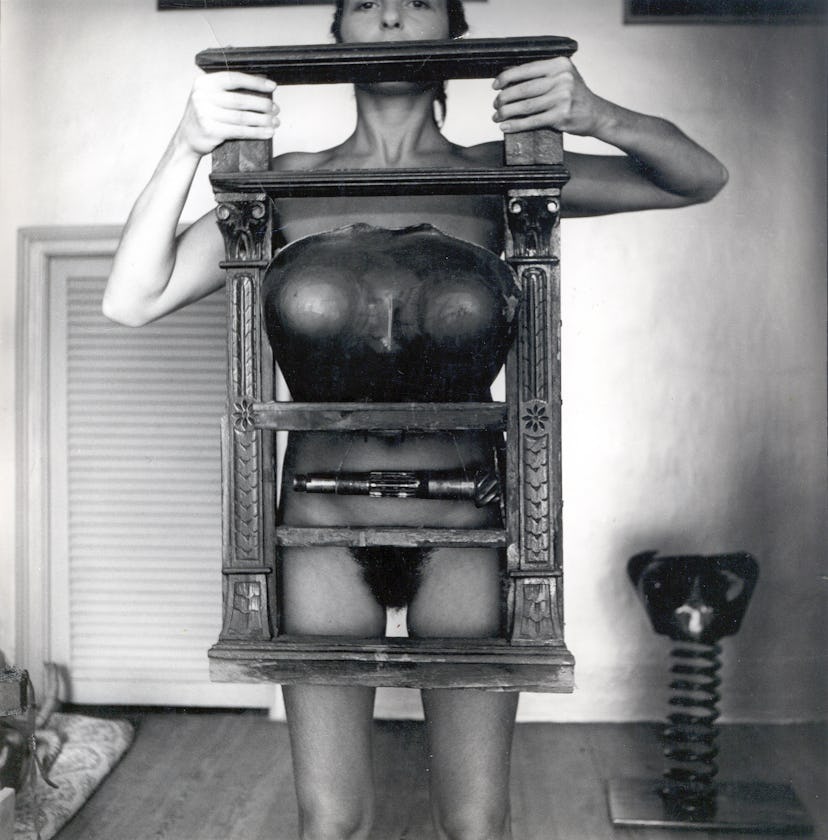The Wonder Women Artists Who Put Their Bodies on the Line
“Radical Women: Latin American Art, 1960–1985” opens at the Hammer Museum on Friday, as part of “Pacific Standard Time: LA/LA.”

While the military dictator Juan Carlos Onganía was in power in Argentina in 1968, the artist Graciela Carnevale locked a group of people inside one of her exhibitions, where they remained trapped until a passerby saw them and smashed a glass window, setting them free. “Radical Women: Latin American Art, 1960–1985,” which opens at the Hammer Museum, in Los Angeles, on September 15 (through December 31), aims to stage its own form of liberation, putting on view the trailblazing efforts of courageous female artists from 15 countries who challenged aesthetic dicta, patriarchal attitudes, and even oppressive regimes. Often they placed bodies—their own and those of other women—front and center, under threat, on the line.
Ana Mendieta’s *Untitled (Facial Hair Transplants)*, 1972
Take Ana Mendieta, who, following the rape and murder of a fellow student at the University of Iowa in 1973, posed in her own apartment as the victim had been found, with her upper body sprawled across a table, naked from the waist down, her legs smeared with blood. The performance survives in wrenching photographs. “Very early, she was able to give representation to the trauma of rape,” says Andrea Giunta, a co-curator with Cecilia Fajardo-Hill of the sprawling survey, part of the Getty Foundation’s “Pacific Standard Time: LA/LA” initiative on Latin American and Latino art.
Then there is María Evelia Marmolejo, who pioneered performance art in early-1980s Colombia, cutting herself before shocked audiences, and the Chicana artist Isabel Castro, who, around the same time, began a series called “Women Under Fire”—photocopy collages that have the crosshairs of a gun floating atop images of women whose family members had been victims of enforced sterilization. “Most of the time the work was in storage and the records in poor condition,” says Giunta, recalling their seven-year effort to assemble the show, which, even with more than 250 works, she adds, represents “only the tip of an iceberg.”
Teresinha Soares’s *Muera Usando Las Legítimas Alpargatas (Die Wearing the Legitimate Espadrilles)*, 1968
See W’s most popular videos: